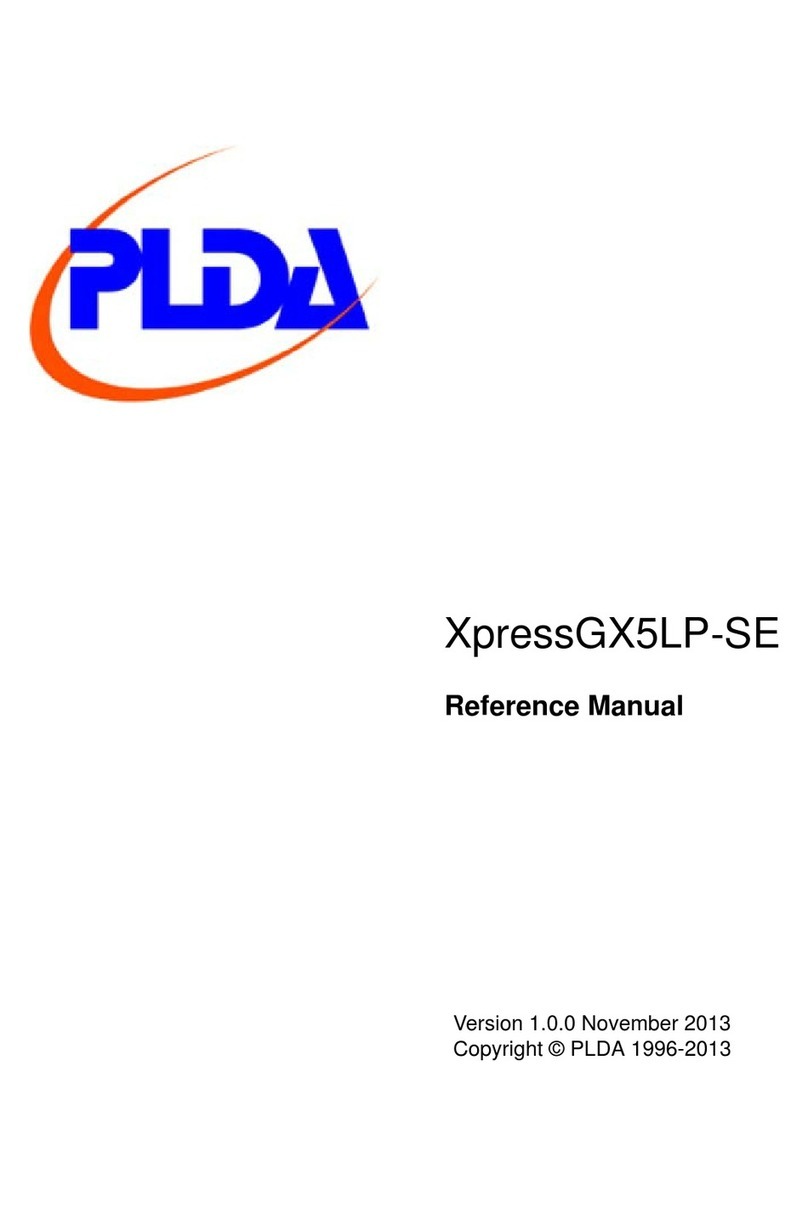
XpressGX4LP Reference Manual
2
XpressGX4LP
Reference Manual
Document Change History
Proprietary Notice
Words and logos marked with ® or ™ are registered trademarks or trademarks owned by PLDA SAS. Other
brands and names mentioned herein may be the trademarks of their respective owners.
Neither the whole nor any part of the information contained in, or the product described in, this document may be
adapted or reproduced in any material form except with the prior written permission of the copyright holder.
The product described in this document is subject to continuous developments and improvements. All particulars
of the product and its use contained in this document are given by PLDA in good faith. This document is provided
“as is” with no warranties whatsoever, including any warranty of merchantability, non infringement, fitness for any
particular purpose, or any warranty otherwise arising out of any proposal, specification, or sample.
This document is intended only to assist the reader in the use of the product. PLDA shall not be liable for any loss
or damage arising from the use of any information in this document, or any error or omission in such information,
or any incorrect use of the product. Nor shall PLDA be liable for infringement of proprietary rights relating to use of
information in this document. No license, express or implied, by estoppel or otherwise, to any intellectual property
rights is granted herein.
Date DocVersion Board Version Change
March 2012 1.0.8 P120 v1.0 •Corrected clocking circuitry diagram and SFP+
interface signal specification.
•Updated configuration references.
October 2011 1.0.7 P120 v1.0 •Added fpga_adbus command (reload boot sector).
September 2011 1.0.6 P120 v1.0 •Corrected clock circuitry table and diagram.
September 2011 1.0.5 P120 v1.0 •Modified fpga_adbus signal.
•Added image of daughter card.
September 2011 1.0.4 P120 v1.0 •Modified Flash signals descriptions.
August 2011 1.0.3 P120 v1.0 •Updated documentation to reflect new features for
board version P120 v1.0, including 10G Ethernet
channels and extension interface.
June 2011 1.0.2 P117 v1.0 •Updated clocking information and block diagram.
•Added FPGA resources and board configuration
module information.
May 2011 1.0.1 P117 v1.0 •Corrected documentation bugs.
May 2011 1.0.0 P117 v1.0 •First Release




























